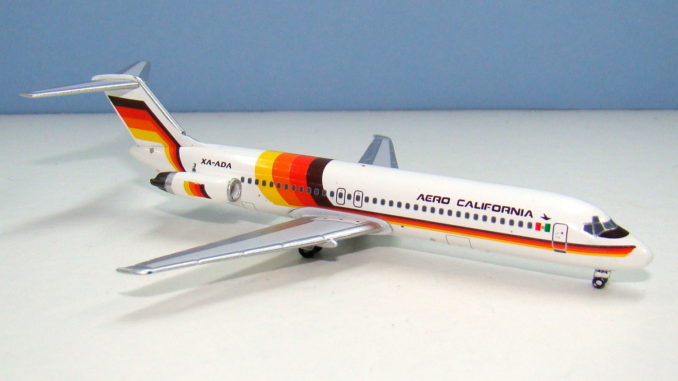
When I was young Aero California always confused me as the name suggested the USA but it was a Mexican airline, however California is not just the US state but also related to the Baja peninsula south of it within Mexican territory. This is split into Baja California and Baja California Sur and is where Aero California called home. Mexican releases seem to sell especially well and I have a particular fondness for the Mexican aviation scene so am happy to add this release to my collection.
THE REAL THING
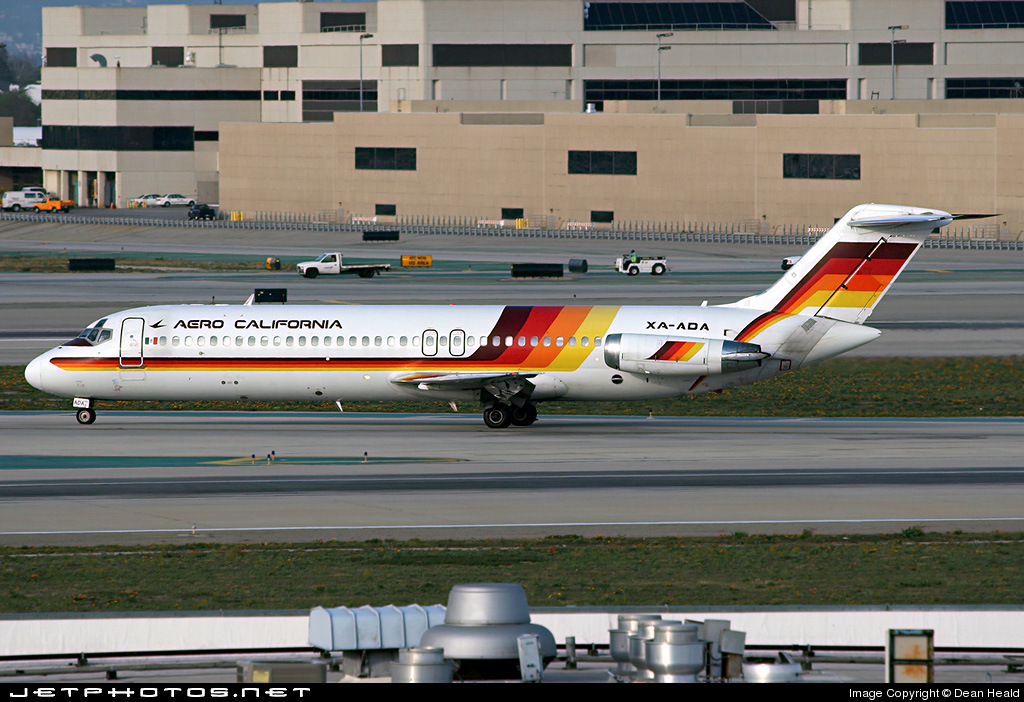
Aero California was based at La Paz, near the Baja peninsula’s tip, and began as an air taxi operator in 1960. Branching into charter operations it had DC-3s by the early 1980s and started scheduled services in 1982 connecting La Paz to Tijuana, on the US border, and Hermosillo, in the neighbouring Sonora state.
Gradually the fleet was built up into an all jet DC-9 operation, which from 1989 was operating international services into the USA. Initially the DC-9s were short series 14s and 15s, which had started their careers with the US majors (TWA, Eastern and Delta) or Swissair in 1966/67. Gradually stretched DC-9-32s, often of a similar vintage, joined the fleet. The series 30s had an equally diverse parentage having flown for well-known DC-9 users such as Alitalia, Iberia, KLM, Swissair, Turkish, ALM, British Midland and Valujet.
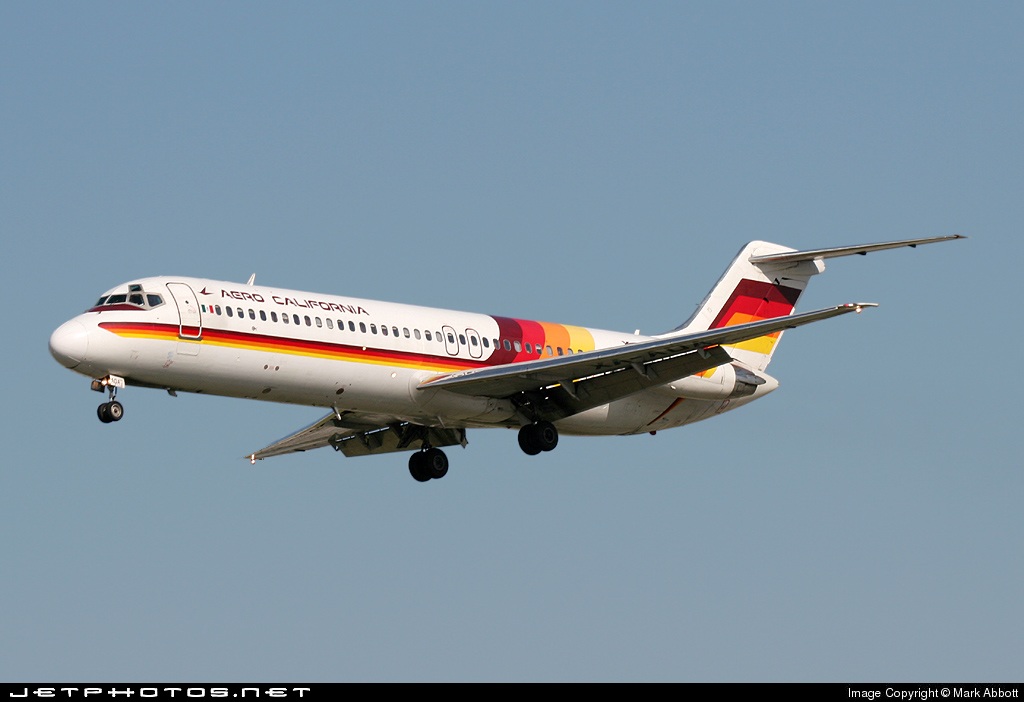
Nonetheless the airline seems to have never really grown or made any serious money even after the deregulation of the Mexican domestic market. Instead it appears to have been comfortable with its old diesel nines and gradually bulking up its existing network. Positively this meant avoiding the bloodbath that had such massive impacts on Aeroméxico, Mexicana, TAESA, SARO and the like. No doubt the devaluation of the Mexican currency and the weakness of the economy had a major impact on the airline’s ability to upgrade its fleet and the DC-9s continued in service into the 21st Century.
By 2004 the fleet had increased to an impressive 22 aircraft split equally between DC-9-15s and DC-9-32s but the airline’s reputation was not the highest. This wasn’t helped by the crash of one of its 1967 vintage DC-9-14s (XA-BCS) on July 21, 2004 when it aborted take-off at Mexico City after it encountered wind shear. There were no fatalities but the crash shone an unfavourable light on the old fleet.
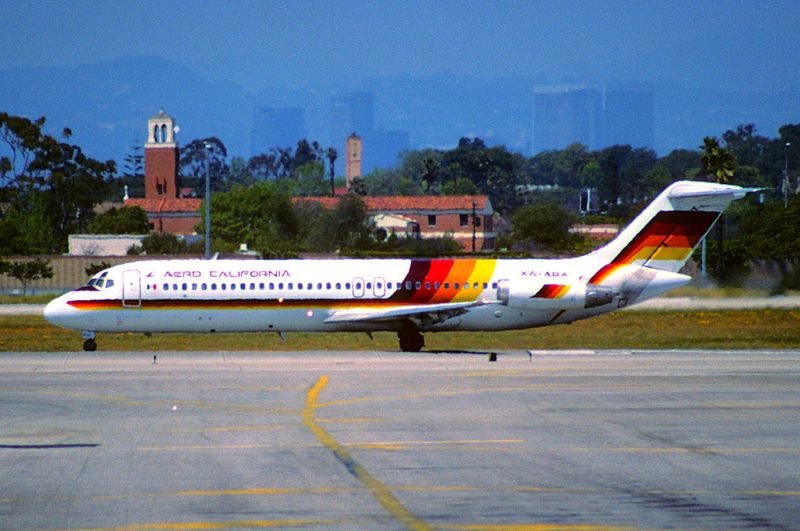
Aero California was losing market share to competitors like AVIACSA and if it couldn’t compete against them it was never going to survive the arrival of LCCs like Volaris and Interjet. In April 2006 the airline’s operations were suspended by the Mexican government due to safety infringements. This signalled the end of the DC-9-14/15s but Aero California was able to restart operations in August. Operations struggled on for another two years until July 2008 when again the airline’s license was suspended, this time for financial reasons.
XA-ADA was a relatively sprightly DC-9-32 in the Aero California fleet having only been built in 1979. She flew with Texas International as N3513T and later Continental Airlines (as N18513) before a short lease to Air Aruba in 1999 as P4-DCB. She joined the Mexican airline in December 2000 and continued through until the end. Of the 37 DC-9s that served at one time or another with Aero California only two saw further service once their time was up in Mexico.
THE MODEL
The format for my reviews is to split them into three key areas:
- The mould of the aircraft
- The paint and livery
- Printing and quality control
Each can get a maximum score of 10 for a section giving a maximum combined score of 30.
THE MOULD
The Douglas DC-9 saw quite a bit of mould making associated with it in 1:400 scale within the first ten years of the scale establishing itself. Unfortunately most of the moulds that were created have not aged very well and the Gemini Jets, SMA, Net Models and Phoenix DC-9s are not highly thought of. In fact only the Jet-X and Aeroclassics DC-9-30s really hit the mark well.
Aeroclassics’ mould dates from 2006 but still remains one of the finest 1:400 scale moulds ever made. Many of the other moulds have a heavy overly rounded and too tall ‘snoopy style’ nose but not the Aeroclassics DC-9, which has a perfectly shaped nose and cockpit region. The nosegear is well placed and suitably small, as is the maingear.
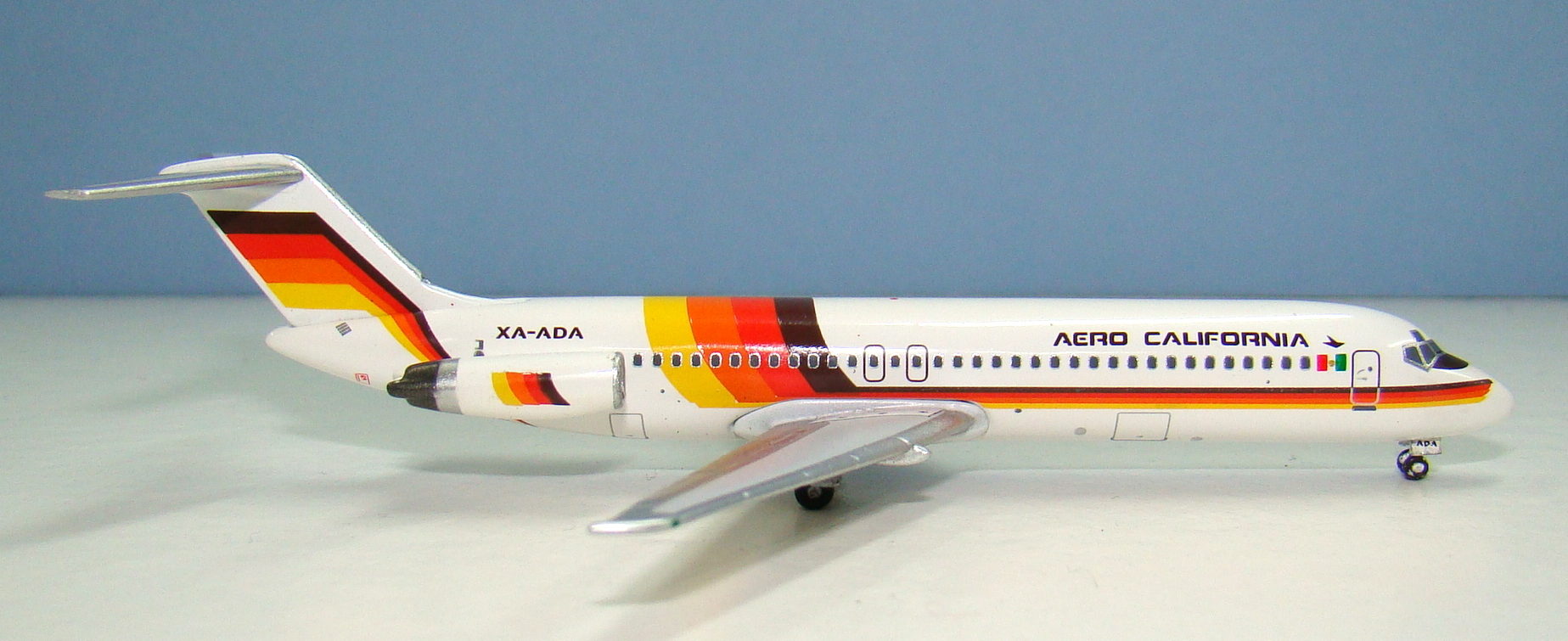
The mould is a cradle mount, rather than a slot in wings mould, but is probably the best example of how to do this well that has been made. The seam is small and follows the natural shape of the fairing. In fact it is hard to tell it is a seam at all.
The wings are detailed and thin, the engines perfectly sized and mounted, and the rear fuselage and vertical stabiliser faultless. In fact there is not a single criticism to be made of this mould. If only Aeroclassics would create a DC-9-10 version of it to go with their series 30 and 51.
SCORE – 10
PAINT & LIVERY
Aero California had an interesting and colourful livery unlike almost anyone elses. They never really altered it and since it was so attractive I guess there was no good reason to do so. It consisted of 4 different colour bands (yellow, orange, red and brown) wrapping over the top of the fuselage and narrowing moving forward to finish under the cockpit. A similar trick allowed the thin strands of colour to expand onto the tail.
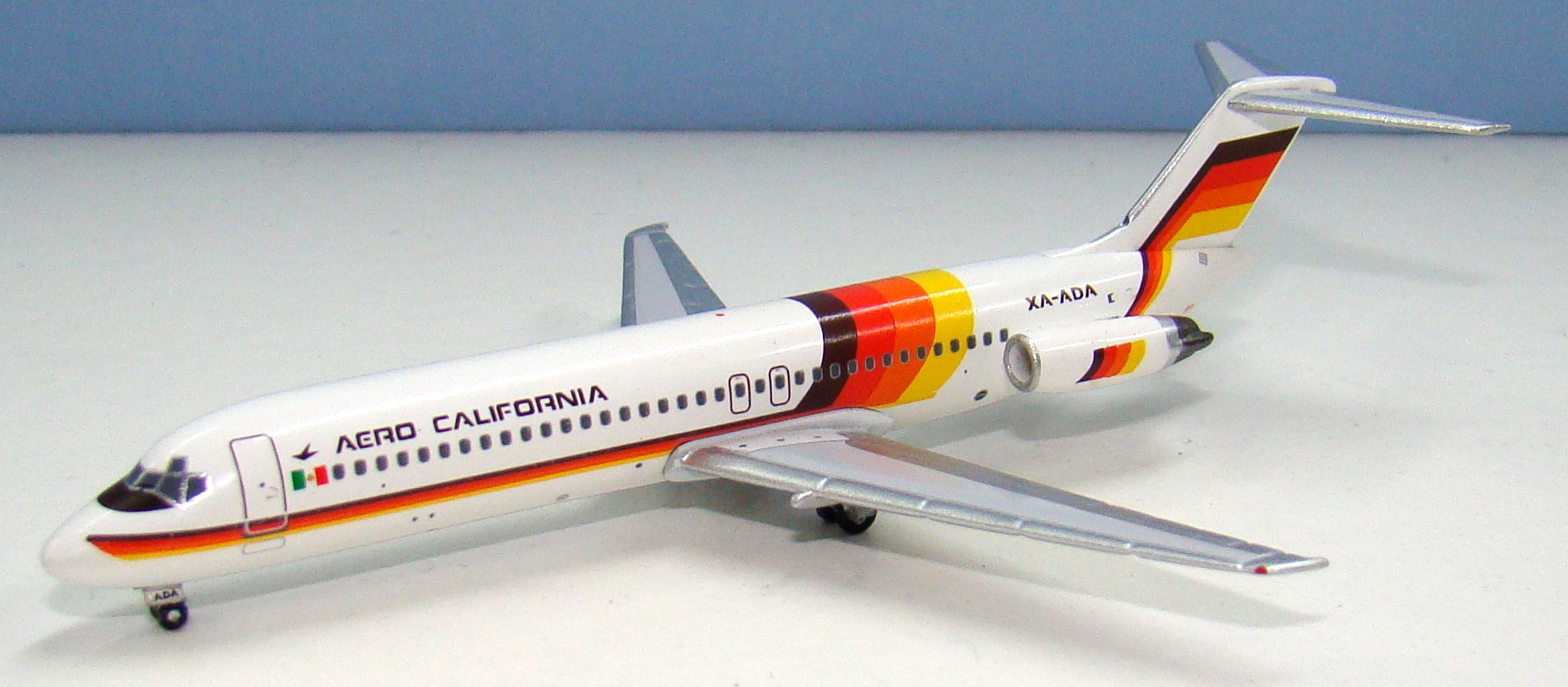
Aeroclassics has successfully achieved the four different colour shades and also the placement of the livery striping, both on the tail and on the fuselage. The font used on the registration of the aircraft and the main titles is quite unusual but Aeroclassics have done a decent rendition of it. It may not be exactly 100% but it is plenty close enough, especially considering its small size.
I do think the Mexican flag behind the main entry door is a little large and the bird logo above it a little small but these things are barely worth mentioning. Lastly the anti-glare shield ahead of the cockpit is present and correct.
SCORE – 10
PRINTING & QUALITY CONTROL
The DC-9 is quite a clean airframe so there isn’t large amounts of extra printing detail to be added, however what is there covers most of what can be seen from photos too. The printing of important things like the cockpit windows is exemplary; however the printing of some of the livery elements is less impressive.
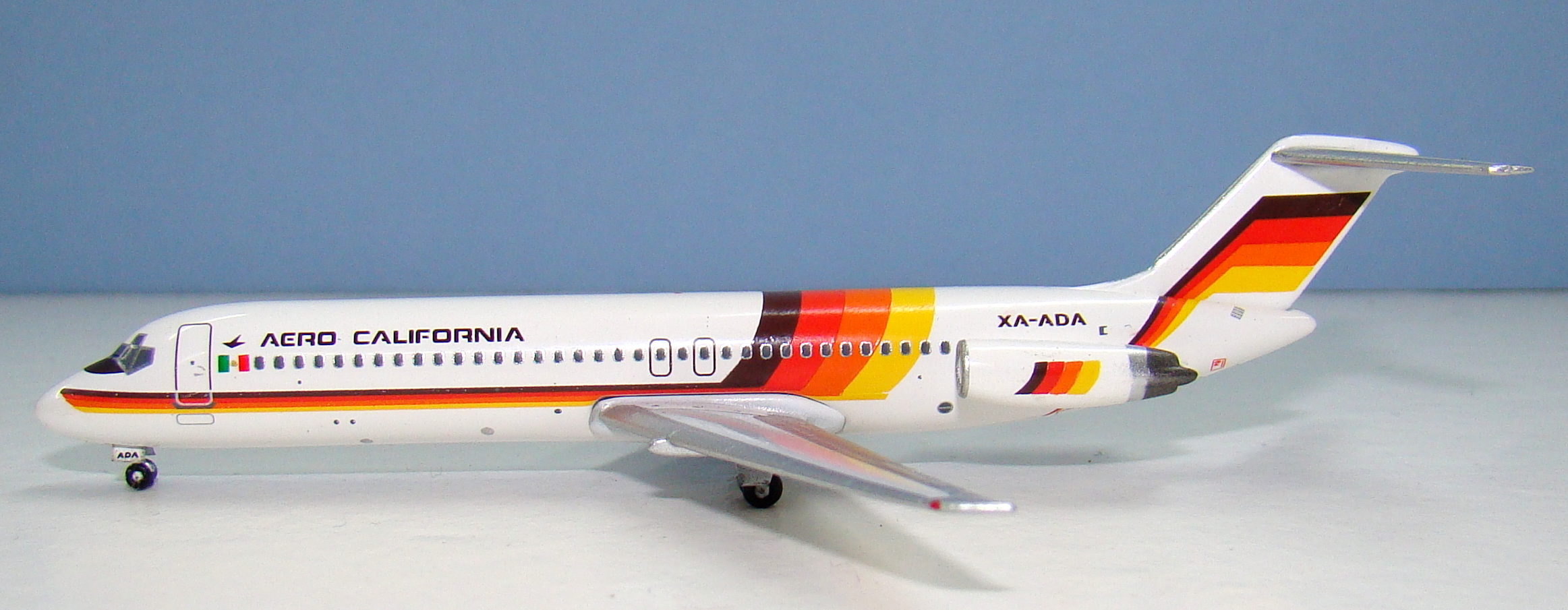
The printing of the lower margin of the thick yellow fuselage band on the port side is weak, with a white line through it. Also the printing of the stripes on the engine has been done stripe by stripe giving a poorly defined upper and lower margin. One other minor point is that the silver front of the engines is nowhere near thick enough on the model.
The model itself is perfectly put together with no quality issues in the construction whatsoever.
SCORE – 8
CONCLUSION
I can’t get enough Aeroclassics DC-9s and this model combines a historically important airline, an attractive livery and a great mould. It is probably already sold out but is miles ahead of the old Gemini Jets version and a must have for both Mexicans and Californians everywhere.
FINAL SCORE – 28/30


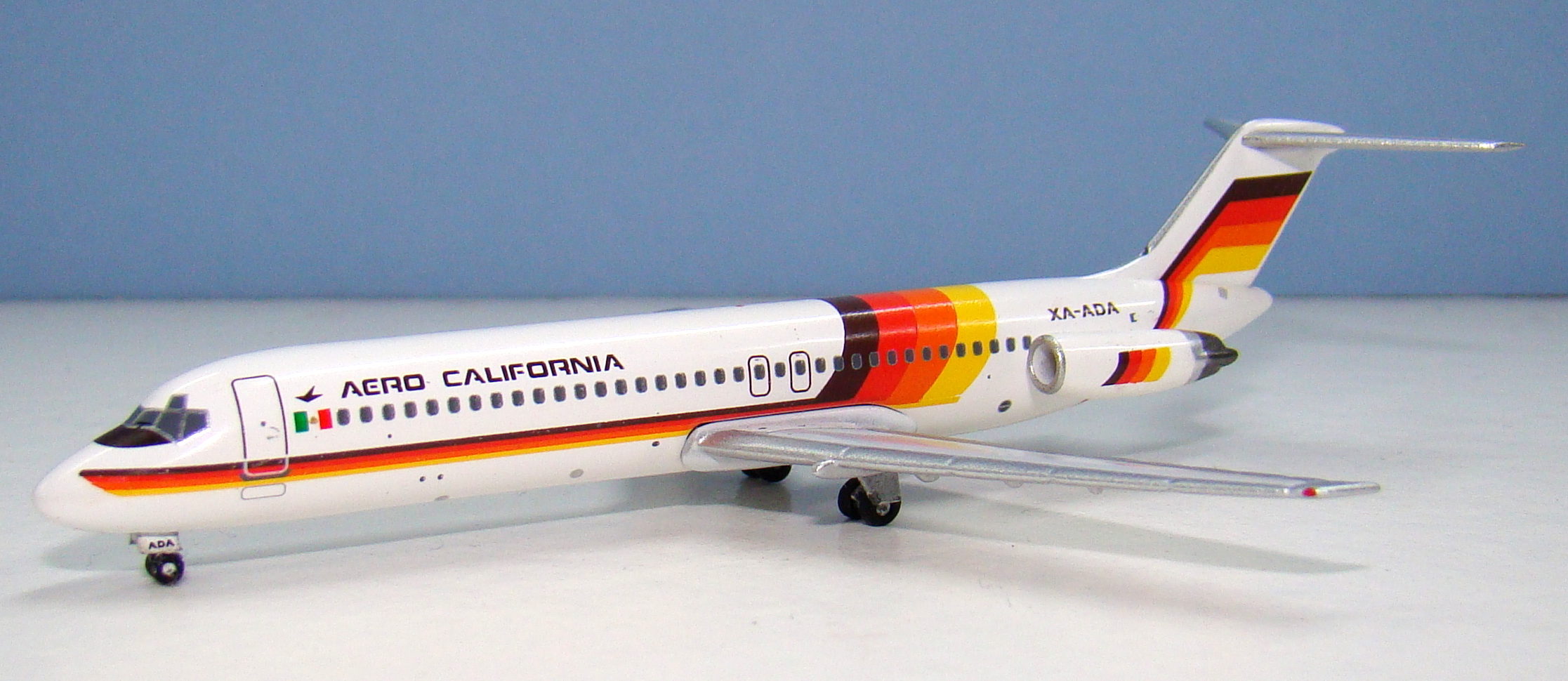



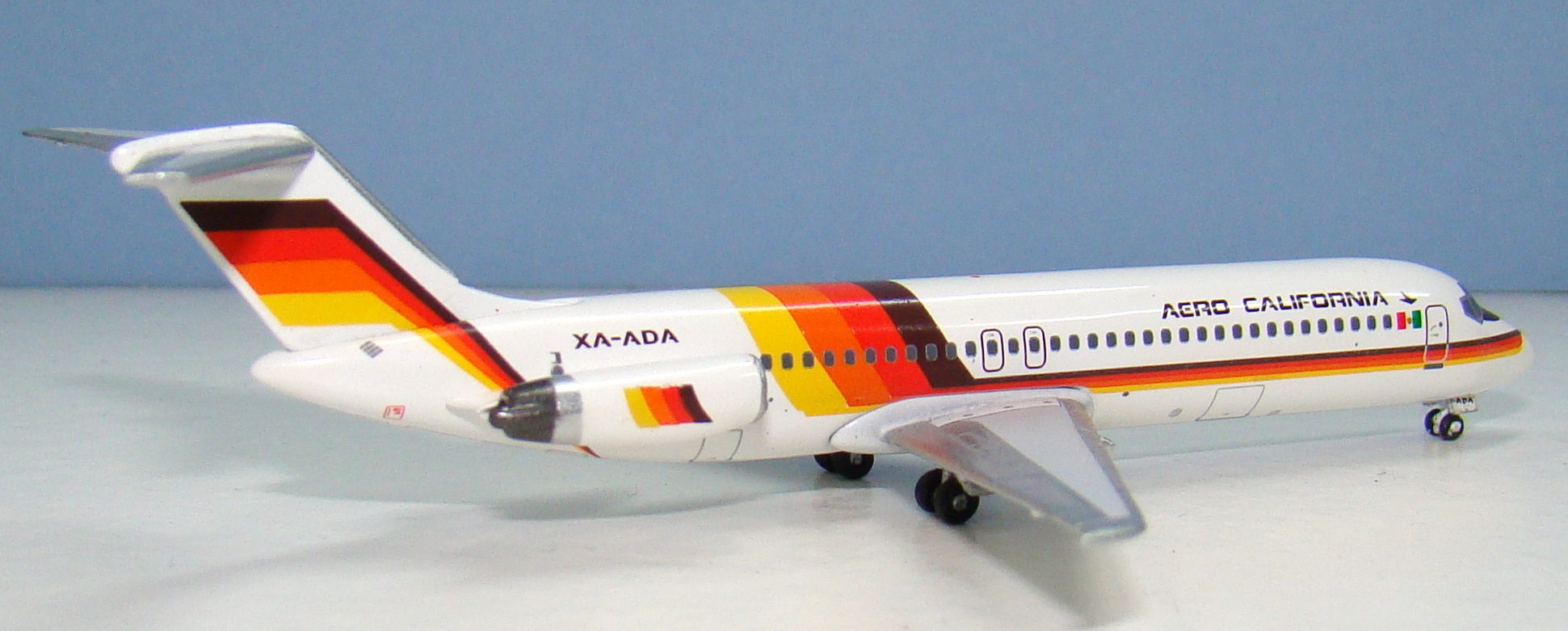

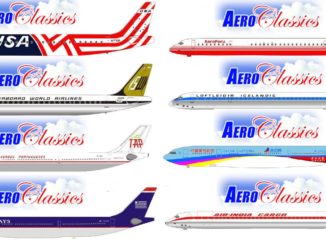
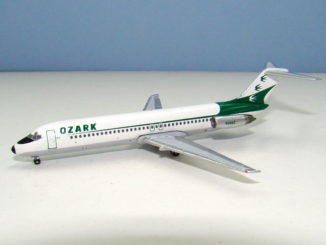
A great addition to Aeroclassics’ DC-9 lineup. It is to AC’s credit that they have been doing so many historic DC-9’s this year. They’ve sure been dressing up my collection. :+) Keep up the good work! There are many more historic DC-9’s to do, too. An Aeroclassics ValuJet DC-9-30 would be very welcome, as would Republic-Northwest transitional liveries and Republic Mary Tyler Moore.
Jim
If you look carefully at prototype photos you will note one livery alteration. The titles are sometimes black, as on this AC version, but there are also some photos with a deep red color to the titles. At first I thought it was just the lighting in various photos but as I viewed more, the two variants became clear. It’s a bit annoying for me because what prompted me to notice this was that I have the old Gemini release as well and it has the red titles. I was looking forward to selling it after obtaining the AC version since the mould is inferior as you point out. But now I’m considering keeping it to show the livery variation…